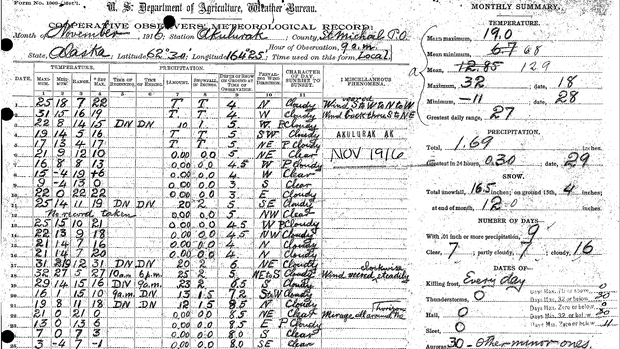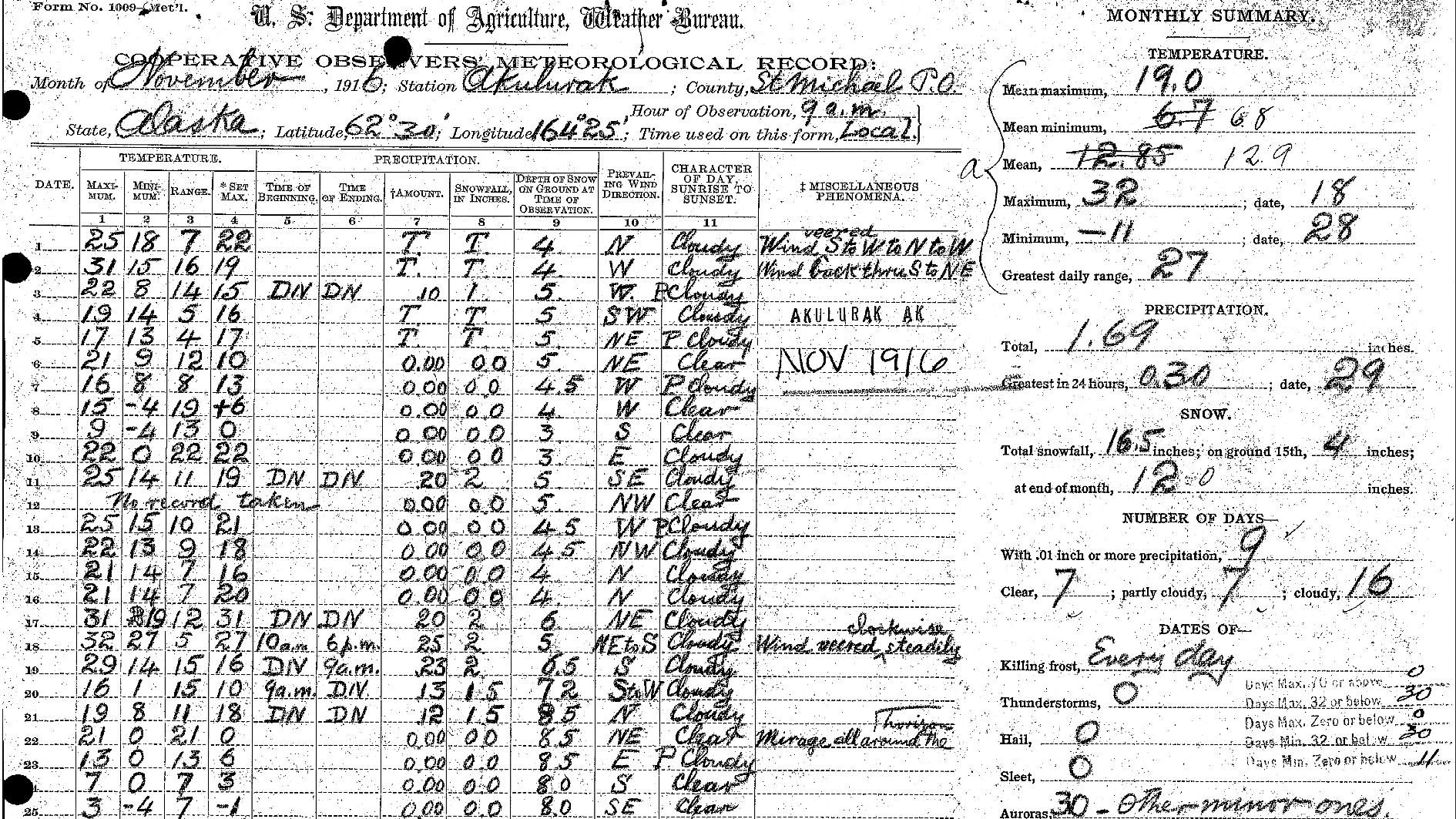Through the National Weather Service (NWS) Cooperative Observer Program (COOP), more than 10,000 volunteers take daily weather observations. Daily observations are provided as digital scans of handwritten records or computer-generated forms. COOP data usually consist of daily maximum and minimum temperatures, snowfall, and 24-hour precipitation totals.
Where do these data come from?
Volunteer Cooperative Weather Observers measure weather every day at National Parks, seashores, mountaintops, and farms as well as in urban and suburban areas. There are several different types of instrumentation used by COOP Observers to keep track of the weather: the instruments are identical at all stations across the country.
-
What can I do with these data?
- Examine daily weather observations recorded on monthly forms by volunteer observers.
- Explore handwritten observations and remarks on daily weather or historical weather events.
- Look for outliers and calculate average monthly temperatures and precipitation totals from original data.
How do I use the site?
- Select a state or territory from the list in the upper right of the page.
- Choose a station of interest
- Each station name shows its period of record, from the first year and month to the last year and month.
- Select a year and month
- Click the link for your publication.
 Click to see more detail
Click to see more detail
